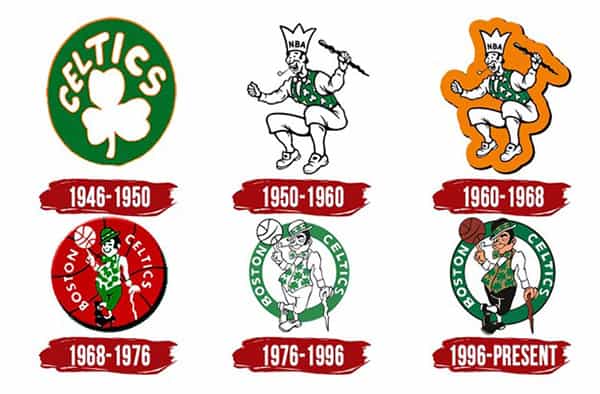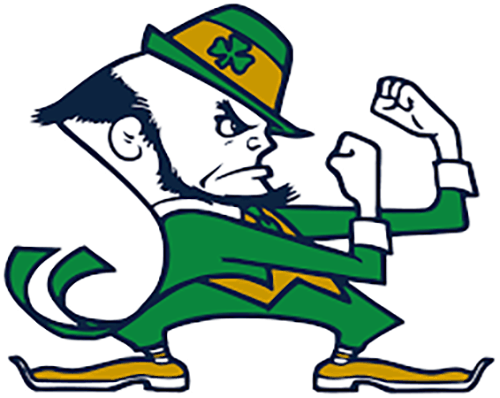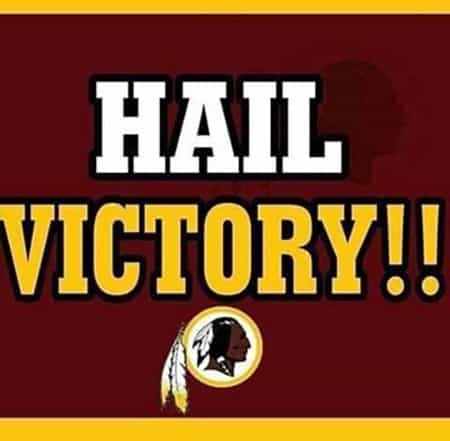New Team Name: Cleveland Caucasians?
Gregory Hood, American Renaissance, December 15, 2020
The Cleveland Indians are no more. The team was already scrapping mascot Chief Wahoo — said to be “racist” — and now, the name itself is gone. It’s nothing new; the Indians join the Washington Redskins, the University of North Dakota Fighting Sioux, and the William & Mary Tribe (formerly the “Indians.”) President Donald Trump tweeted that it was “cancel culture at work.”
It’s more than that. It’s about power and racial collective interests. If it is offensive to have Indian mascots, is it offensive to have white ones? The answer is that it depends.
Consider the Boston Celtics. During the 1980s, many people saw the Boston Celtics as the “white team,” much like Duke in college basketball. The Celtics’ star was Larry Bird, and the team was mostly white. Its rival was the “Showtime Era” Los Angeles Lakers with Earvin “Magic” Johnson. ESPN reported in 2007 that some blacks couldn’t “identify” with the Celtics because the team was too white.
In his first feature movie, She’s Gotta Have It, Spike Lee had a character call Larry Bird the “ugliest motherfu**er in the NBA.” He used Larry Bird gear as a symbol for “whiteness” in Do The Right Thing. In a photo essay for Style, he called a black man wearing a Celtics cap an “Uncle Tom.”
In 2008, the Root agonized about whether it was OK to root for the Celtics now that it had a mostly black roster. In 2013, columnist Ron Chimelis said that the star black forward Kevin Garnett should be honored partially because he helped the team shed its “white” label.
This is strange because the Boston Celtics were the first NBA team to draft a black player, Chuck Cooper. In 1963–1964, they were the first team with an all-black starting five. The center in the 1980s was Robert Parish, a black player who made the NBA Hall of-Fame. The 1980s Celtics were therefore hardly an all-white bastion, but some blacks felt they were not “represented.” In basketball, “representation” apparently means dominance.
And then there is the mascot, “Lucky” the leprechaun that portrays Boston’s Irish. He has grown more cartoonish over time, but he remains unmistakably white.

And what about Notre Dame’s “Fighting Irish”?

ESPN’s Max Kellerman says the mascot has got to go because “pernicious, negative stereotypes of marginalized people that offend, even some among them, should be changed.” Most Irish I know like the mascots and wear the gear, even if they aren’t from the Northeast. It’s a light-hearted caricature. Most Irish-Americans probably feel the same way about jokes made at their expense. Besides, the Notre Dame Leprechaun can be black now; at least the student playing the role on the sidelines can be black. Last year, the Wall Street Journal said the importance of a black leprechaun “goes beyond entertainment.” Of course, if the races were reversed, it would be unforgivable blackface.
But what if a white college student plays a Seminole leader during the traditional ceremony before home games at Florida State? Suddenly, that’s a serious matter. And you’d better not laugh at jokes about American Indians (at least publicly). Justifying the double standards can be difficult if you aren’t carefully trained in intersectionality. Conservative reporter James O’Keefe, as a young activist at Rutgers, put his university on the spot, insisting that the caricatured Irishman on the box of “Lucky Charms” cereal in the cafeteria was a deep insult to the Irish.
Other white mascots include the New York Knicks (short for the “knickerbockers,” which used to refer to New York’s Dutch settlers) and of course, the New York Yankees. Minnesota, heavily settled by Germans and Scandinavians, has the Vikings. The University of Louisiana has the Ragin’ Cajuns. Are any whites upset by the implication that Vikings, Fighting Irish, and Ragin’ Cajuns are violent wild men? No, but Canadian Football’s Edmonton Eskimos are now verboten. Why? No one is even implying Eskimos are violent.
The question becomes complicated because sometimes non-whites are upset about white mascots. The University of Mississippi abandoned its “Rebel” mascot because it offended blacks. The University of Las Vegas recently removed a statue of its “Rebel” mascot, which dates back to the 1950s and signified “rebel” status against the parent campus at Reno. In those days, it was romantic to rebel, and the university admits that the choice of mascot was “based in rivalry and fun,” but there is nothing fun anymore about the Confederacy.
The Washington Redskins and the Cleveland Indians had to go because their mascots insulted Indians. “Rebels” have to go because they glorified the Confederacy. You have to be well trained in decoding double standards to make sense of that.
Other schools have changed white nicknames or mascots. The University of Denver replaced the Disney-designed cartoon character “Denver Boone,” because it supposedly offended American Indians. Denver Boone was hardly intimidating. There was a time when students complained that he looked weak. Some Grinnell College alumni want to change their “pioneer” nickname. Capital University is changing its “Crusader” mascot. Is it offensive when white mascots are heroic, conquering, or victorious because it celebrates violence?
Indian mascots are a tribute to courageous violence. The Florida State Seminoles, the former Washington Redskins, and the endangered Atlanta Braves have a fierce reputation. Adopting these names shows respect. America’s greatest Indian fighter was probably General William Tecumseh Sherman, himself named after a great Indian leader.
Army helicopters are named for Indian tribes. In 1947, General Hamilton Howze started the tradition because choppers are so quick and agile they can attack enemy flanks and disappear, just as Indians did during the wars on the Great Plains. That’s why we have the Apache, Black Hawk, Chinook and, most recently, the Lakota. Does anyone think these names are insults? And what people other than whites would recognize the valor of their enemies?
American Indians symbolize strength to sports fans. The point of sports is to beat the other team. “Hail to the Redskins,” the “Tomahawk Chop” used by several teams, and Florida State’s flaming “spear plant” are intimidating and cool. It’s no different from the famous New Zealand “All Blacks” (for the jerseys, not the race) rugby team performing an intimidating, Maori war dance known as a “haka” before the game. Whites, blacks, Maori and everyone else participates.

This is an insult?
A reverse logic is at work when it comes to white mascots. Whites who conquered the wilderness, rose against tyranny, or waged a war for God could be natural role models, but that would upset the system. America doesn’t want to remind white men what we are capable of.
Thus, the white mascots that remain are harmless jokes. Of course, none of us is offended by these jokes, but if there were jokes about other groups, there would be outrage, protests, and eventual purges of team names and mascots.
When someone tried to mock whites with a mascot, it didn’t work. In 2002, an American Indian activist helped start an intramural team at the University of Northern Colorado called the “Fighting Whities,” with a 1950s-style white-man mascot, and the motto “every thangs gonna be all white!!!” Many whites thought it was great. Perhaps they felt “represented.” An attempt to shame whites inadvertently became a symbol against political correctness and double standards.
The double standards will grow increasingly absurd because so many activists, journalists, “nonprofit” organizations, and government bureaucrats justify their existence by finding “racism.” Demand for “racism” exceeds supply. Thus, things that were once normal become controversial or even traumatic. It’s tempting to say that this is all an act and that activists claim to be offended because it gives them power. The terrifying thought is that many people may believe this stuff and are reduced to quivering neurotics by a cartoon.
The Rise of Victimhood Culture argued in 2018 that the West is moving to a new moral code, the victimhood culture that already reigns at most universities. To oversimplify: In an “honor” culture, people avenge slights, in a “dignity” culture they sue, in a “victimhood” culture they whine. Victim status means sympathetic media, humiliation of foes, and reparations.
Sports mascots are a version of what’s happening with statues, flags, anthems, and other symbols. Whites shrug off insults because we don’t want to seem weak or touchy — but for non-whites, showing weakness is the way to display strength and get power. We’re held hostage by our virtue. The system also constantly ratchets up the claims of victims, which is why yesterday’s liberal becomes tomorrow’s “canceled” oppressor. Just ask J.K. Rowling. After years of racial conformity, she fell afoul of new rules about who can be a “woman.” There must always be something new that is offensive or many people are out of a job.
Dumping the Cleveland Indians isn’t justice. It’s not even “cancel culture,” something we could roll our eyes at. It’s a naked power grab, another way to humiliate white people. So let’s consider some new names. The “Washington Whiteskins” is a better name than Redskins. I’d root for the Cleveland Caucasians. The Edmonton Europeans is the perfect name. We won’t be offended. We just want to see ourselves represented.















